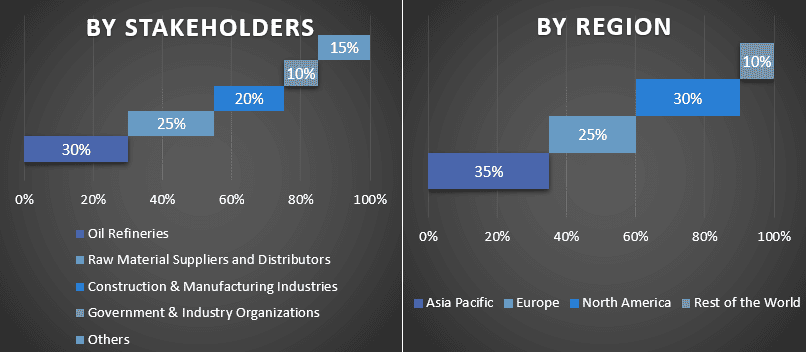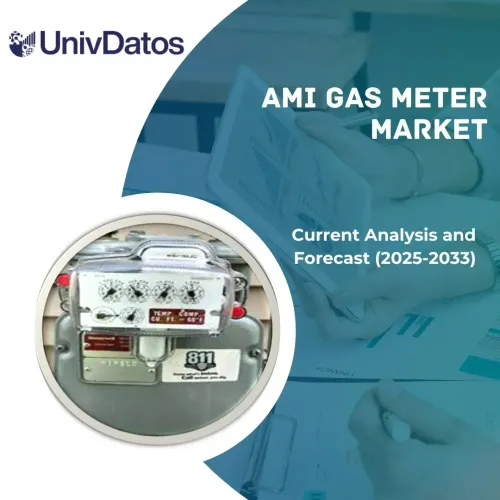- Home
- About Us
- Industry
- Services
- Reading
- Contact Us
Coal Tar Market: Current Analysis and Forecast (2022-2028)
Emphasis on Type (Low-Temperature Coal Tar, Medium-Temperature Coal Tar, and High-Temperature Coal Tar Utility); End-Users (Tire Industry, Ink & Paint Industry, Roofing, Aluminum & Steel Industry, Graphite Electrodes, and Others); Application (Coal Tar Pitch, Specialty Oil, Carbon Black Oil, and Others); and Region/Country

Global Coal Tar Market is expected to grow at a significant rate of around 5% during the forecast period. Coal tar is the solid fuel obtained as the by-product of coke and is slightly soluble in water. Coal tar is widely used in soaps, shampoos, and ointments due to its inflammatory and antifungal properties. Coal-tar consists of carbon and coal-gas and is mainly used to produce coal-tar products such as coal-tar pitch & creosote and refined chemicals. Coal tar is a highly desired product for steel, aluminum, and automotive industries. The increasing urbanization coupled with the increasing population, infrastructural development, and use of coal tar for road construction due to the lower operational cost is also driving the growth of coal tar across the world. Furthermore, there are several major companies in the market that are continuously investing in the coal tar market. For instance, in 2020, Epsilon Carbon announced an investment of USD 121.6 million to set up an integrated carbon black facility with a capacity of 300,000 tons per annum in India.
Nippon Steel & Sumitomo Metal, Mitsubishi Chemical, Baowu Steel Group, JFE Chemical, Koppers Inc., Rain Carbon Inc., China Steel Chemical Corp., Shandong Gude Chemical Co. Ltd, Himadri Specialty Chemicals Ltd., and Coopers Creek Chemical Corporation. are some of the key players in the market. Several M&As along with partnerships have been undertaken by these players to facilitate customers with lower prices and innovative products/technologies.
Insights Presented in the Report
“Amongst type, low-temperature coal tar category to witness robust CAGR during the forecast period”
Based on type, the market is segmented into low-temperature coal tar, medium-temperature coal tar, and high-temperature coal tar utility. Amongst which the low-temperature coal tar segment holds a significant market share compared to other segments and is expected to remain the same during the forecast period due to its use in the production of jet fuel. For instance, according to data published by the world economy, the average consumption of jet fuel was 70.9 thousand barrels per day for the year 2021 and is expected to increase due to globalization and several governments’ individual initiatives to promote the tourism industry.
“Amongst application, the coal tar pitch segment to hold a significant share in the market in 2020”
Based on application, the market is categorized into coal tar pitch, specialty oil, carbon black oil, and others. Amongst which the coal tar pitch shows significant market growth in the market for the year 2021 and is expected to remain the same during the forecast period owing to its use for the production of refined chemicals including creosote and other derivative product. Additionally, the use of coal tar pitch in the healthcare industry for the treatment of seborrheic dermatitis, eczema, and psoriasis among others. Along with the healthcare industry, the coal tar pitch is also used in the paint industry and as the binder for asphalt which is expected to increase the demand for coal tar in the future.
“Asia-Pacific to hold a significant share in the market”
In 2020, Asia Pacific held a significant share of the global coal tar market. This is mainly attributed to the increasing demand for aluminum, and steel as well as their utilization in paint manufacturing, dye manufacturing, and industry along with the use in photographic material. Additionally, the increasing development of the construction industry and the use of coal tar in asphalt mixing and coating of the pavement will propel the coal tar market in the region. Moreover, the government policies in the region are also supporting the coal tar market. For instance, the Chinese government mandates that aluminum manufacturers switch the electric arc furnace for the production of aluminum & steel which somehow increases the demand for the graphite electrode and is projected to increase the demand for coal tar in the region. Additionally, there are several major players in the market continuously investing in coal tar manufacturing projects. For instance, in the year 2021, AMNS (ArcelorMittal Nippon Steel) inked a contract with the Odisha government to set up a steel plant with a capacity of 12 MT steel production.
Reasons to buy this report:
- The study includes market sizing and forecasting analysis validated by authenticated key industry experts.
- The report presents a quick review of overall industry performance at one glance.
- The report covers an in-depth analysis of prominent industry peers with a primary focus on key business financials, product portfolio, expansion strategies, and recent developments.
- Detailed examination of drivers, restraints, key trends, and opportunities prevailing in the industry.
- The study comprehensively covers the market across different segments.
- Deep dive regional level analysis of the industry.
Customization Options:
The global coal tar market can further be customized as per the requirement or any other market segment. Besides this, UMI understands that you may have your own business needs, hence feel free to connect with us to get a report that completely suits your requirements.
Table of Content
Research Methodology for the Coal Tar Market Analysis (2022-2028)
Analyzing the historical market, estimating the current market, and forecasting the future market of the global coal tar market were the three major steps undertaken to create and analyze the adoption of coal tar in major regions globally. Exhaustive secondary research was conducted to collect the historical market numbers and estimate the current market size. Secondly, to validate these insights, numerous findings and assumptions were taken into consideration. Moreover, exhaustive primary interviews were also conducted, with industry experts across the value chain of the global coal tar market. Post assumption and validation of market numbers through primary interviews, we employed a top-down/bottom-up approach to forecasting the complete market size. Thereafter, market breakdown and data triangulation methods were adopted to estimate and analyze the market size of segments and sub-segments of the industry pertains to. Detailed methodology is explained below:
Analysis of Historical Market Size
Step 1: In-Depth Study of Secondary Sources:
Detail secondary study was conducted to obtain the historical market size of the coal tar market through company internal sources such as annual reports & financial statements, performance presentations, press releases, etc., and external sources including journals, news & articles, government publications, competitor publications, sector reports, third-party database, and other credible publications.
Step 2: Market Segmentation:
After obtaining the historical market size of the coal tar market, we conducted a detailed secondary analysis to gather historical market insights and share for different segments & sub-segments for major regions. Major segments are included in the report as type, end-users, and application. Further country-level analyses were conducted to evaluate the overall adoption of testing models in that region.
Step 3: Factor Analysis:
After acquiring the historical market size of different segments and sub-segments, we conducted a detailed factor analysis to estimate the current market size of the coal tar market. Further, we conducted factor analysis using dependent and independent variables such as various types, end-users, and applications of all-terrain vehicles. A thorough analysis was conducted for demand and supply-side scenarios considering top partnerships, mergers and acquisitions, business expansion, and product launches in the coal tar market sector across the globe.
Current Market Size Estimate & Forecast
Current Market Sizing: Based on actionable insights from the above 3 steps, we arrived at the current market size, key players in the global coal tar market, and market shares of the segments. All the required percentage shares split, and market breakdowns were determined using the above-mentioned secondary approach and were verified through primary interviews.
Estimation & Forecasting: For market estimation and forecast, weights were assigned to different factors including drivers & trends, restraints, and opportunities available for the stakeholders. After analyzing these factors, relevant forecasting techniques i.e., the top-down/bottom-up approach were applied to arrive at the market forecast for 2028 for different segments and sub-segments across the major markets globally. The research methodology adopted to estimate the market size encompasses:
- The industry’s market size, in terms of revenue (USD) and the adoption rate of the coal tar market across the major markets domestically
- All percentage shares, splits, and breakdowns of market segments and sub-segments
- Key players in the global coal tar market in terms of products offered. Also, the growth strategies adopted by these players to compete in the fast-growing market
Market Size and Share Validation
Primary Research: In-depth interviews were conducted with the Key Opinion Leaders (KOLs) including Top Level Executives (CXO/VPs, Sales Head, Marketing Head, Operational Head, Regional Head, Country Head, etc.) across major regions. Primary research findings were then summarized, and statistical analysis was performed to prove the stated hypothesis. Inputs from primary research were consolidated with secondary findings, hence turning information into actionable insights.
Split of Primary Participants in Different Regions

Market Engineering
The data triangulation technique was employed to complete the overall market estimation and to arrive at precise statistical numbers for each segment and sub-segment of the global coal tar market. Data was split into several segments & sub-segments post studying various parameters and trends in the areas of type, end-users, and application in the global coal tartar market
The main objective of the Global Coal Tar Market Study
The current & future market trends of the global coal tar market were pinpointed in the study. Investors can gain strategic insights to base their discretion for investments on the qualitative and quantitative analysis performed in the study. Current and future market trends determined the overall attractiveness of the market at a regional level, providing a platform for the industrial participant to exploit the untapped market to benefit from a first-mover advantage. Other quantitative goals of the studies include:
- Analyze the current and forecast market size of the coal tar market in terms of value (USD). Also, analyze the current and forecast market size of different segments and sub-segments
- Segments in the study include areas of type, end-users, and application.
- Define and analysis of the regulatory framework for the coal tar industry
- Analyze the value chain involved with the presence of various intermediaries, along with analyzing customer and competitor behaviors of the industry.
- Analyze the current and forecast market size of the coal tar market in the major region.
- Major countries of regions studied in the report include Asia Pacific, Europe, North America, and the Rest of the World.
- Company profiles of the coal tar market and the growth strategies adopted by the market players to sustain in the fast-growing market
- Deep dive regional level analysis of the industry
Related Reports
Customers who bought this item also bought










